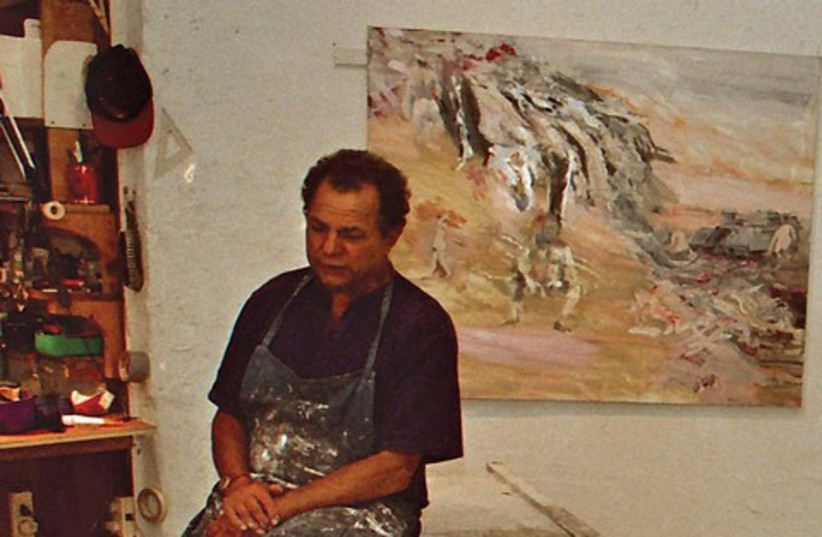More than a decade after Ivan Schwebel (1932–2011) passed away, the Herzliya Museum of Contemporary Art is presenting FSP – Free-Standing Painting, an exhibition that seeks to renew the public’s acquaintance with the artist and his work.
The vast archival material he left behind, as well as hundreds of his paintings, drawings, engravings and work journals, reveal the artist that Schwebel was: someone for whom painting was an existential need and a refuge.
His work journals reflect his life like a script or a storyboard, highlighting such elements in his artwork as cinematic thought, cartoon-like dynamic aesthetics, and American culture.
The life of Ivan Schwebel
Born in the US, Schwebel immigrated to Israel in 1963, and settled in Jerusalem’s Ein Karem neighborhood. His paintings have been featured in exhibitions at the Israel Museum, the Tel Aviv Museum of Art, the Mishkan Museum of Art in Ein Harod, and many other venues.
While his talent was immediately recognized, his frustration mounted as he gradually found himself working increasingly outside of the mainstream.

His work expresses a fundamental connection between the act of painting and the world of cinema, the photographed image and cinematic editing. Schwebel used to say that for him the canvas was like a cinematic screen that allows the impossible to happen. Depicting old movie theaters, Schwebel often painted large curtains on either side of the canvas. These paintings, full of pathos, convey creative intensity.
Schwebel’s work expresses painful episodes from Jewish history; for instance, images from old documentaries and photographs taken during the Holocaust show figures of humiliated Jews with Nazi soldiers. He paints the expulsion of the Jews from Spain together with the grotesque figures of King Ferdinand and Queen Isabella and antisemitic iconography. Various figures from the history of art and American cultural, and cinematic icons, reveal his affinity with popular culture.
In his FSP – Free-Standing Painting project from the 1970s, Schwebel constructed walls and placed them at various sites in Israel. The Free-Standing Painting might also be seen as a representation of the painter himself – standing free and apart. The walls, which were supposed to serve as a support for landscape paintings, come across as drive-in screens that stand in isolation, at once rooted in the site, and alien and distinct from it.
Schwebel envisioned creating a similar project throughout New York City, as evident from a series of images he conceived with renditions of urban collages that combined photography and painting. These plans, which never came to fruition, bring to mind the rhetoric of billboards, and underline Schwebel’s strong urge to link together art with everyday life and the street.
Co-curated by Dr. Aya Lurie and Ori Drumer, the exhibition, which closes June 17, was made possible thanks to close cooperation with the artist’s family.
Herzliya Museum of Contemporary Art, 4 Habanim St. www.herzliyamuseum.co.il/en
